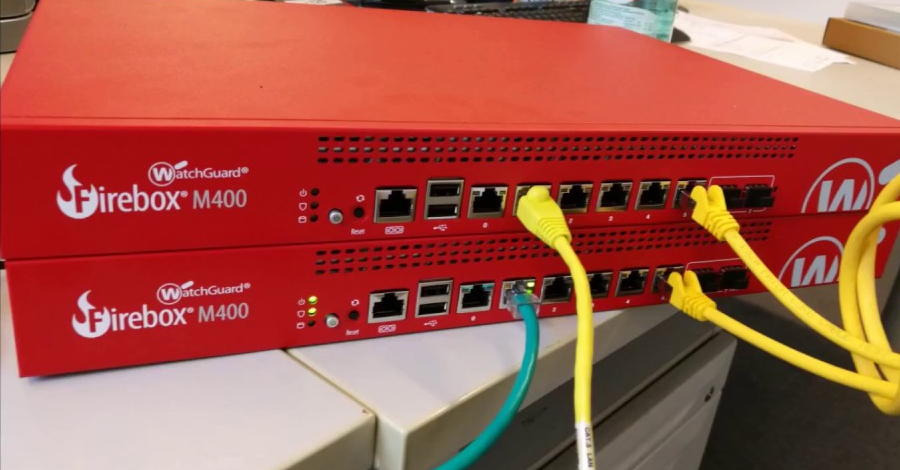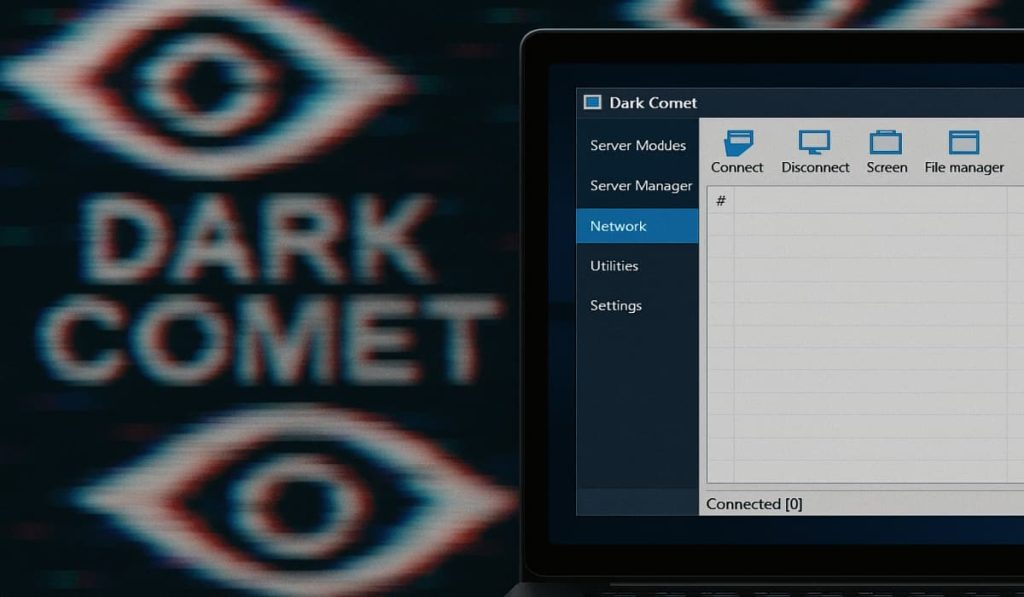Anthropic made headlines Thursday when it released research claiming that a previously unknown Chinese state-sponsored hacking group used the company’s Claude AI generative AI product to breach at least 30 different organizations. According to Anthropic’s report, the threat actor was able to bypass Claude’s security guardrails using two methods: breaking up the work into discrete … Read More “China’s ‘autonomous’ AI-powered hacking campaign still required a ton of human work – CyberScoop” »
Category: Attack Feeds
CISA Warns of Active Attacks on Cisco ASA and Firepower Flaws – Hackread – Cybersecurity News, Data Breaches, Tech, AI, Crypto and More

CISA issues an urgent directive for all organizations to patch Cisco ASA and Firepower devices against CVE-2025-20362 and CVE-2025-20333, exploited in the ArcaneDoor campaign. Verify the correct version now! – Read More – Hackread – Cybersecurity News, Data Breaches, Tech, AI, Crypto and More
The North Korean threat actors behind the Contagious Interview campaign have once again tweaked their tactics by using JSON storage services to stage malicious payloads. “The threat actors have recently resorted to utilizing JSON storage services like JSON Keeper, JSONsilo, and npoint.io to host and deliver malware from trojanized code projects, with the lure,” NVISO … Read More “North Korean Hackers Turn JSON Services into Covert Malware Delivery Channels – The Hacker News” »
Personal details of Tate galleries job applicants leaked online – Data and computer security | The Guardian

Sensitive information relates to more than 100 individuals and their referees Personal details submitted by applicants for a job at Tate art galleries have been leaked online, exposing their addresses, salaries and the phone numbers of their referees, the Guardian has learned. The records, running to hundreds of pages, appeared on a website unrelated to … Read More “Personal details of Tate galleries job applicants leaked online – Data and computer security | The Guardian” »
Chinese State Hackers Jailbroke Claude AI Code for Automated Breaches – Hackread – Cybersecurity News, Data Breaches, Tech, AI, Crypto and More

Anthropic, the developer behind Claude AI, says a Chinese state sponsored group used its model to automate most of a cyber espionage operation against about 30 companies with Claude handling up to 90% of the technical work. – Read More – Hackread – Cybersecurity News, Data Breaches, Tech, AI, Crypto and More
The phishing kit Lighthouse, which has aided text scams like those soliciting victims to pay unpaid road tolls, appears to have been hampered shortly after Google filed a lawsuit aimed at its creators. Google said on Thursday that Lighthouse had been shut down. Two other organizations that have tracked the suspected Chinese operators of Lighthouse … Read More “Google, researchers see signs that Lighthouse text scammers disrupted after lawsuit – CyberScoop” »
Iranian Hackers Launch ‘SpearSpecter’ Spy Operation on Defense & Government Targets – The Hacker News

The Iranian state-sponsored threat actor known as APT42 has been observed targeting individuals and organizations that are of interest to the Islamic Revolutionary Guard Corps (IRGC) as part of a new espionage-focused campaign. The activity, detected in early September 2025 and assessed to be ongoing, has been codenamed SpearSpecter by the Israel National Digital Agency (INDA). … Read More “Iranian Hackers Launch ‘SpearSpecter’ Spy Operation on Defense & Government Targets – The Hacker News” »
Researchers Find Serious AI Bugs Exposing Meta, Nvidia, and Microsoft Inference Frameworks – The Hacker News

Cybersecurity researchers have uncovered critical remote code execution vulnerabilities impacting major artificial intelligence (AI) inference engines, including those from Meta, Nvidia, Microsoft, and open-source PyTorch projects such as vLLM and SGLang. “These vulnerabilities all traced back to the same root cause: the overlooked unsafe use of ZeroMQ (ZMQ) and Python’s pickle deserialization,” – Read More … Read More “Researchers Find Serious AI Bugs Exposing Meta, Nvidia, and Microsoft Inference Frameworks – The Hacker News” »
Chinese Tech Firm Leak Reportedly Exposes State Linked Hacking – Hackread – Cybersecurity News, Data Breaches, Tech, AI, Crypto and More

A massive data leak reportedly at Chinese firm Knownsec (Chuangyu) exposed 12,000 files detailing state-backed ‘cyber weapons’ and spying on over 20 countries. See the details, including 95GB of stolen Indian immigration data. – Read More – Hackread – Cybersecurity News, Data Breaches, Tech, AI, Crypto and More
Key Takeaways: 85 active ransomware and extortion groups observed in Q3 2025, reflecting the most decentralized ransomware ecosystem to date. 1,590 victims disclosed across 85 leak sites, showing high, sustained activity despite law-enforcement pressure. 14 new ransomware brands launched this quarter, proving how quickly affiliates reconstitute after takedowns. LockBit’s reappearance with – Read More – … Read More “Ransomware’s Fragmentation Reaches a Breaking Point While LockBit Returns – The Hacker News” »
Retail giants have a target on their backs. Hackers are picking them apart at a rate rarely seen in other industries. Louis Vuitton and Dior are part of a growing number of household names affected. Their breaches alone may have cost them upwards of $25 million. Moreover, Google has warned that the hacker group that … Read More “The retail sector needs a cybersecurity talent incubator – CyberScoop” »
State-sponsored threat actors from China used artificial intelligence (AI) technology developed by Anthropic to orchestrate automated cyber attacks as part of a “highly sophisticated espionage campaign” in mid-September 2025. “The attackers used AI’s ‘agentic’ capabilities to an unprecedented degree – using AI not just as an advisor, but to execute the cyber attacks themselves,” the … Read More “Chinese Hackers Use Anthropic’s AI to Launch Automated Cyber Espionage Campaign – The Hacker News” »
Fortinet FortiWeb Flaw Actively Exploited in the Wild Before Company’s Silent Patch – The Hacker News

Cybersecurity researchers are sounding the alert about an authentication bypass vulnerability in Fortinet Fortiweb WAF that could allow an attacker to take over admin accounts and completely compromise a device. “The watchTowr team is seeing active, indiscriminate in-the-wild exploitation of what appears to be a silently patched vulnerability in Fortinet’s FortiWeb product,” Benjamin Harris, – … Read More “Fortinet FortiWeb Flaw Actively Exploited in the Wild Before Company’s Silent Patch – The Hacker News” »
How Adversaries Exploit the Blind Spots in Your EASM Strategy – Hackread – Cybersecurity News, Data Breaches, Tech, AI, Crypto and More

Internet-facing assets like domains, servers, or networked device endpoints are where attackers look first, probing their target’s infrastructure… – Read More – Hackread – Cybersecurity News, Data Breaches, Tech, AI, Crypto and More
Federal cyber authorities shared new details Thursday about the Akira ransomware group’s techniques, the tools it uses and vulnerabilities it exploits for initial access alongside the release of a joint cybersecurity advisory. Members of the financially motivated group, which initially appeared in March 2023, are associated with other threat groups, including Storm-1567, Howling Scorpius, Punk … Read More “FBI calls Akira ‘top five’ ransomware variant out of 130 targeting US businesses – CyberScoop” »
Russian Hackers Create 4,300 Fake Travel Sites to Steal Hotel Guests’ Payment Data – The Hacker News

A Russian-speaking threat behind an ongoing, mass phishing campaign has registered more than 4,300 domain names since the start of the year. The activity, per Netcraft security researcher Andrew Brandt, is designed to target customers of the hospitality industry, specifically hotel guests who may have travel reservations with spam emails. The campaign is said to … Read More “Russian Hackers Create 4,300 Fake Travel Sites to Steal Hotel Guests’ Payment Data – The Hacker News” »
Scammers Abuse WhatsApp Screen Sharing to Steal OTPs and Funds – Hackread – Cybersecurity News, Data Breaches, Tech, AI, Crypto and More

A fast-spreading threat, known as the screen-sharing scam, is using a simple feature on WhatsApp to steal money… – Read More – Hackread – Cybersecurity News, Data Breaches, Tech, AI, Crypto and More
Washington Post confirms data on nearly 10,000 people stolen from its Oracle environment – CyberScoop

The Washington Post said it, too, was impacted by the data theft and extortion campaign targeting Oracle E-Business Suite customers, compromising human resources data on nearly 10,000 current and former employers and contractors. The company was first alerted to the attack and launched an investigation when a “bad actor” contacted the media company Sept. 29 … Read More “Washington Post confirms data on nearly 10,000 people stolen from its Oracle environment – CyberScoop” »
Operation Endgame Hits Rhadamanthys, VenomRAT, Elysium Malware, seize 1025 servers – Hackread – Cybersecurity News, Data Breaches, Tech, AI, Crypto and More

Europol-led Operation Endgame seizes 1,025 servers and arrests a key suspect in Greece, disrupting three major global malware and hacking tools, including Rhadamanthys, VenomRAT and Elysium botnet. – Read More – Hackread – Cybersecurity News, Data Breaches, Tech, AI, Crypto and More
Google is suing more than two dozen unnamed individuals allegedly involved in peddling a popular China-based mobile phishing service that helps scammers impersonate hundreds of trusted brands, blast out text message lures, and convert phished payment card data into mobile wallets from Apple and Google. In a lawsuit filed in the Southern District of New … Read More “Google Sues to Disrupt Chinese SMS Phishing Triad – Krebs on Security” »
Cybersecurity researchers are calling attention to a large-scale spam campaign that has flooded the npm registry with thousands of fake packages since early 2024 as part of a likely financially motivated effort. “The packages were systematically published over an extended period, flooding the npm registry with junk packages that survived in the ecosystem for almost … Read More “Over 67,000 Fake npm Packages Flood Registry in Worm-Like Spam Attack – The Hacker News” »
In a sweeping international crackdown coordinated from Europol’s headquarters, law enforcement agencies from the United States and 10 other countries have disrupted three of the world’s most widely used cybercriminal malware operations. Conducted Nov. 10-13, Operation Endgame focused on neutralizing the Rhadamanthys info-stealing malware, the VenomRAT remote access trojan, and the Elysium botnet — tools … Read More “Operation Endgame targets malware networks in global crackdown – CyberScoop” »
SAP Pushes Emergency Patch for 9.9 Rated CVE-2025-42887 After Full Takeover Risk – Hackread – Cybersecurity News, Data Breaches, Tech, AI, Crypto and More

CVE 2025 42887 vulnerability, rated 9.9, allows code injection through Solution Manager giving attackers full SAP control urgent patch needed to block system takeover. – Read More – Hackread – Cybersecurity News, Data Breaches, Tech, AI, Crypto and More
Fake Chrome Extension “Safery” Steals Ethereum Wallet Seed Phrases Using Sui Blockchain – The Hacker News

Cybersecurity researchers have uncovered a malicious Chrome extension that poses as a legitimate Ethereum wallet but harbors functionality to exfiltrate users’ seed phrases. The name of the extension is “Safery: Ethereum Wallet,” with the threat actor describing it as a “secure wallet for managing Ethereum cryptocurrency with flexible settings.” It was uploaded to the Chrome … Read More “Fake Chrome Extension “Safery” Steals Ethereum Wallet Seed Phrases Using Sui Blockchain – The Hacker News” »
Top 3 Malware Families in Q4: How to Keep Your SOC Ready – Hackread – Cybersecurity News, Data Breaches, Tech, AI, Crypto and More

Q3 showed sharp growth in malware activity as Lumma AgentTesla and Xworm drove access and data theft forcing SOC teams toward quicker behavior checks – Read More – Hackread – Cybersecurity News, Data Breaches, Tech, AI, Crypto and More
Operation Endgame Dismantles Rhadamanthys, Venom RAT, and Elysium Botnet in Global Crackdown – The Hacker News

Malware families like Rhadamanthys Stealer, Venom RAT, and the Elysium botnet have been disrupted as part of a coordinated law enforcement operation led by Europol and Eurojust. The activity, which is taking place between November 10 and 13, 2025, marks the latest phase of Operation Endgame, an ongoing operation designed to take down criminal infrastructures … Read More “Operation Endgame Dismantles Rhadamanthys, Venom RAT, and Elysium Botnet in Global Crackdown – The Hacker News” »
When Attacks Come Faster Than Patches: Why 2026 Will be the Year of Machine-Speed Security – The Hacker News

The Race for Every New CVE Based on multiple 2025 industry reports: roughly 50 to 61 percent of newly disclosed vulnerabilities saw exploit code weaponized within 48 hours. Using the CISA Known Exploited Vulnerabilities Catalog as a reference, hundreds of software flaws are now confirmed as actively targeted within days of public disclosure. Each new … Read More “When Attacks Come Faster Than Patches: Why 2026 Will be the Year of Machine-Speed Security – The Hacker News” »
ThreatsDay Bulletin: Cisco 0-Days, AI Bug Bounties, Crypto Heists, State-Linked Leaks and 20 More Stories – The Hacker News

Behind every click, there’s a risk waiting to be tested. A simple ad, email, or link can now hide something dangerous. Hackers are getting smarter, using new tools to sneak past filters and turn trusted systems against us. But security teams are fighting back. They’re building faster defenses, better ways to spot attacks, and stronger … Read More “ThreatsDay Bulletin: Cisco 0-Days, AI Bug Bounties, Crypto Heists, State-Linked Leaks and 20 More Stories – The Hacker News” »
CISA Flags Critical WatchGuard Fireware Flaw Exposing 54,000 Fireboxes to No-Login Attacks – The Hacker News

The U.S. Cybersecurity and Infrastructure Security Agency (CISA) on Wednesday added a critical security flaw impacting WatchGuard Fireware to its Known Exploited Vulnerabilities (KEV) catalog, based on evidence of active exploitation. The vulnerability in question is CVE-2025-9242 (CVSS score: 9.3), an out-of-bounds write vulnerability affecting Fireware OS 11.10.2 up to and including – Read More … Read More “CISA Flags Critical WatchGuard Fireware Flaw Exposing 54,000 Fireboxes to No-Login Attacks – The Hacker News” »
New York, New York, 13th November 2025, CyberNewsWire – Read More – Hackread – Cybersecurity News, Data Breaches, Tech, AI, Crypto and More
ThreatBook Peer-Recognized as a Strong Performer in the 2025 Gartner® Peer Insights™ Voice of the Customer for Network Detection and Response — for the Third Consecutive Year – Hackread – Cybersecurity News, Data Breaches, Tech, AI, Crypto and More

Singapore, Singapore, 13th November 2025, CyberNewsWire – Read More – Hackread – Cybersecurity News, Data Breaches, Tech, AI, Crypto and More
Tinder has got a plan to rummage through your camera roll, and Warren Buffett keeps popping up in convincing deepfakes dishing “number one investment tips.” Meanwhile, will agentic AI replace your co-hosts before you can say “EDR for robots”? and why you should still read books. All this, plus Lily Allen’s new album and Claude … Read More “Smashing Security podcast #443: Tinder’s camera roll and the Buffett deepfake – Graham Cluley” »
Mindgard Finds Sora 2 Vulnerability Leaking Hidden System Prompt via Audio – Hackread – Cybersecurity News, Data Breaches, Tech, AI, Crypto and More

AI security firm Mindgard discovered a flaw in OpenAI’s Sora 2 model, forcing the video generator to leak… – Read More – Hackread – Cybersecurity News, Data Breaches, Tech, AI, Crypto and More
Forty Democratic members of the House and Senate issued a joint letter Wednesday to 19 states led by Democratic governors, urging them to block Immigrations and Customs Enforcement and other federal agencies from accessing driver’s license and registration data in their states. The letter, led by Senator Ron Wyden, D-Ore., and Rep. Adriano Espaillat, D-N.Y., … Read More “Congressional Dems press governors to block feds from accessing state DMV data – CyberScoop” »
The Trump administration’s top cyber officials have emphasized the urgent need to take aggressive action to deter increasingly brazen foreign cyberattacks. Trump himself, however, has repeatedly brushed aside the notion that foreign cyber activity is anything even really noteworthy. When Trump’s team talks about foreign hacking, be it China’s alleged massive cyberespionage campaign against telecommunications … Read More “While White House demands deterrence, Trump shrugs – CyberScoop” »
Google on Wednesday filed a lawsuit against pesky text message scammers — like those who flood targets with notices that they have unpaid road tolls, or have a package waiting — in an attempt to disrupt a “phishing for dummies” operation the company accuses of victimizing more than 1 million people. The lawsuit against 25 … Read More “Google files lawsuit against Lighthouse ‘phishing for dummies’ text scammers – CyberScoop” »
Throughout 2024, OpenAI teased the public release of Sora, its new video generation large language model, capable of creating lifelike visuals out of user prompts. But due to concerns about the tool being used to create realistic disinformation during a critical U.S. election year, the company delayed its release until after the elections. Now, a … Read More “Advocacy group calls on OpenAI to address Sora 2’s deepfake risks – CyberScoop” »
Amazon’s threat intelligence team said it observed an advanced persistent threat group exploiting zero-day vulnerabilities affecting Cisco Identity Service Engine and Citrix NetScaler products before the vendors disclosed and patched the defects last summer. Amazon’s MadPot honeypot service detected active exploitation of the critical defects — CVE-2025-5777 in Citrix and CVE-2025-20337 in Cisco — and … Read More “Amazon pins Cisco, Citrix zero-day attacks to APT group – CyberScoop” »
DarkComet Spyware Resurfaces Disguised as Fake Bitcoin Wallet – Hackread – Cybersecurity News, Data Breaches, Tech, AI, Crypto and More

Old DarkComet RAT spyware is back, hiding inside fake Bitcoin wallets and trading apps to steal credentials via keylogging. – Read More – Hackread – Cybersecurity News, Data Breaches, Tech, AI, Crypto and More
Google has filed a civil lawsuit in the U.S. District Court for the Southern District of New York (SDNY) against China-based hackers who are behind a massive Phishing-as-a-Service (PhaaS) platform called Lighthouse that has ensnared over 1 million users across 120 countries. The PhaaS kit is used to conduct large-scale SMS phishing attacks that exploit … Read More ” Google Sues China-Based Hackers Behind $1 Billion Lighthouse Phishing Platform – The Hacker News” »
A 20-year-old Maryland man allegedly associated with violent extremist group 764 is in federal custody, facing charges for sexual exploitation of children, online coercement and enticement, and cyberstalking. Erik Lee Madison, of Halethorpe, Maryland, is accused of victimizing at least five children this fall, including one as young as 13 at the time. His alleged … Read More “Maryland man faces federal charges for crimes allegedly linked to 764 – CyberScoop” »
Many of the world’s top artificial intelligence companies are making a simple but dangerous mistake. They are accidentally publishing their passwords and digital keys on GitHub, the popular code-sharing website that is used by millions of developers every day. Read more in my article on the Fortra blog. – Read More – Graham Cluley
Hackers Use KakaoTalk and Google Find Hub in Android Spyware Attack – Hackread – Cybersecurity News, Data Breaches, Tech, AI, Crypto and More

North Korea-linked KONNI hackers used KakaoTalk and Google Find Hub to spy on victims and remotely wipe Android devices in a targeted phishing campaign. – Read More – Hackread – Cybersecurity News, Data Breaches, Tech, AI, Crypto and More
Amazon Uncovers Attacks Exploited Cisco ISE and Citrix NetScaler as Zero-Day Flaws – The Hacker News

Amazon’s threat intelligence team on Wednesday disclosed that it observed an advanced threat actor exploiting two then-zero-day security flaws in Cisco Identity Service Engine (ISE) and Citrix NetScaler ADC products as part of attacks designed to deliver custom malware. “This discovery highlights the trend of threat actors focusing on critical identity and network access control … Read More “Amazon Uncovers Attacks Exploited Cisco ISE and Citrix NetScaler as Zero-Day Flaws – The Hacker News” »
[Webinar] Learn How Leading Security Teams Reduce Attack Surface Exposure with DASR – The Hacker News
![[Webinar] Learn How Leading Security Teams Reduce Attack Surface Exposure with DASR – The Hacker News](https://attackfeed.com/wp-content/uploads/2025/11/cyberteams-69gVAb.webp)
Every day, security teams face the same problem—too many risks, too many alerts, and not enough time. You fix one issue, and three more show up. It feels like you’re always one step behind. But what if there was a smarter way to stay ahead—without adding more work or stress? Join The Hacker News and … Read More “[Webinar] Learn How Leading Security Teams Reduce Attack Surface Exposure with DASR – The Hacker News” »
A Russian hacker accused of helping ransomware gangs break into businesses across the United States is set to plead guilty, according to recently filed federal court documents. 25-year-old Aleksey Olegovich Volkov worked as an “initial access broker”, a cybercriminal specialist who focuses on the earliest stage of an attack: gaining the first foothold inside a … Read More “Russian hacker admits helping Yanluowang ransomware infect companies – Graham Cluley” »
Microsoft Fixes 63 Security Flaws, Including a Windows Kernel Zero-Day Under Active Attack – The Hacker News

Microsoft on Tuesday released patches for 63 new security vulnerabilities identified in its software, including one that has come under active exploitation in the wild. Of the 63 flaws, four are rated Critical and 59 are rated Important in severity. Twenty-nine of these vulnerabilities are related to privilege escalation, followed by 16 remote code execution, … Read More “Microsoft Fixes 63 Security Flaws, Including a Windows Kernel Zero-Day Under Active Attack – The Hacker News” »
@facebookmail.com Invites Exploited to Phish Facebook Business Users – Hackread – Cybersecurity News, Data Breaches, Tech, AI, Crypto and More

If you manage Facebook advertising for a small or medium-sized business, open your inbox with suspicion, because attackers… – Read More – Hackread – Cybersecurity News, Data Breaches, Tech, AI, Crypto and More
Active Directory remains the authentication backbone for over 90% of Fortune 1000 companies. AD’s importance has grown as companies adopt hybrid and cloud infrastructure, but so has its complexity. Every application, user, and device traces back to AD for authentication and authorization, making it the ultimate target. For attackers, it represents the holy grail: compromise Active … Read More “Active Directory Under Siege: Why Critical Infrastructure Needs Stronger Security – The Hacker News” »
Google Launches ‘Private AI Compute’ — Secure AI Processing with On-Device-Level Privacy – The Hacker News

Google on Tuesday unveiled a new privacy-enhancing technology called Private AI Compute to process artificial intelligence (AI) queries in a secure platform in the cloud. The company said it has built Private AI Compute to “unlock the full speed and power of Gemini cloud models for AI experiences, while ensuring your personal data stays private … Read More “Google Launches ‘Private AI Compute’ — Secure AI Processing with On-Device-Level Privacy – The Hacker News” »



















